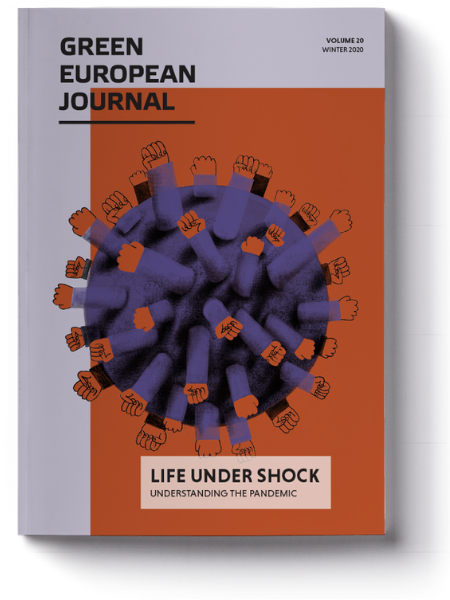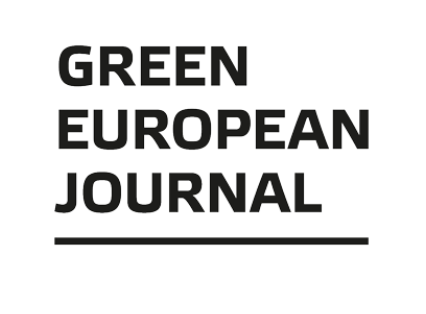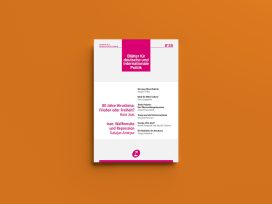Borders, bodies and see-all technologies
Pushing the limits of bio-surveillance
Use of high-tech surveillance is on the rise: in a moment when controlling the spread of COVID-19 is paramount, a global regime of technologically enabled exclusion has been bolstered. But what might be the long-term implications of accepting being tracked before we even move?
‘Draw me a border, if you please’. What image comes to mind? Most of us might think of walls or barbed wire fences planted firmly on frontier locations. From the Great Wall of China to the Berlin Wall, fortified barriers have long served as symbols of sovereign control. Today, however, a new trend has emerged: the growth of invisible borders. These are borders that rely on sophisticated legal techniques to detach migration control functions from a fixed territorial location. The unmooring of state power from a fixed geographical marker has created a new paradigm: the shifting border.
Unlike a physical barrier, the shifting border is not fixed in time and place; it is comprised of legal portals, digital surveillance tools, and AI-powered risk assessments rather than brick and mortar walls. The black lines we find in atlases no longer coincide with the agile locus and focus of migration control. Instead, governments shift the border both outwards and inwards, gaining tremendous capacity to regulate and track individuals before, and after, they reach their desired destination. The flexible tentacles of the shifting border were, until recently, deployed primarily to monitor people on the move, escaping poverty and instability. Today, everyone, including citizens of wealthy democracies, is potentially within its ever-extended reach.
Shifting the border outwards
The relocation of border controls away from a country’s territorial edges establishes a temporal and spatial buffer zone. This in turn permits desired destinations to ‘filter’ and regulate movement prior to arrival. The UK Home Office has clearly explained the motivation for replacing traditional interactions at the border with pre-screening: the encounter ‘can be too late – [unauthorised entrants] have achieved their goal of reaching our shores’.1 The emergence of the shifting border has coincided with the rise of big data and the creation of extensive databases that record travellers’ biometric data, including digital photos, iris scans, and fingerprints. Even prior to the pandemic, governments were embracing measures such as ePassports and global entry fast-track programmes, which use biographic (e.g. name and nationality) and biometric characteristics to identify travellers before they arrive at the gates of their territory.
As part of Europe’s concentrated effort to further migration and mobility management, a pre-clearance ‘electronic travel authorisation’ will soon be required as a matter of course, even for those with visa-free travel and internationally coveted passports. Such electronic pre-clearance must be approved by the government of the destination country before passengers depart, and is linked electronically to their passports. The European Travel Information and Authorisation System (ETIAS) will serve as a clearing house for pre-travel authorisation for all 26 Schengen Area countries and is expected to become operational in 2021. This additional layer of pre-clearance and information-gathering creates a powerful yet invisible border that is operational anywhere in the world, prior to departure, adjusting itself to the location and risk profile of the traveller. When the ETIAS proposal was adopted, Jean-Claude Juncker, then president of the European Commission, justified the EU’s commitment to rolling out this new system in his 2016 State of the Union address as a ‘way to know who is travelling to Europe before they even get here’.
In a similar vein, the European pilot project iBorderCtrl, designed to protect the region’s borders, gives a glimpse of what future digital borders might look like. This EU-funded monitoring system pre-screens incoming travellers, who are required to ‘perform a short, automated, non-invasive interview with an avatar [and] undergo a lie detector’. The avatar is trained to detect deception by looking for ‘micro-gestures’ – subtle non-verbal facial and bodily cues to calculate the traveller’s risk factor. The data is then combined with any pre-existing authority data and stored in databases linked to ‘portable, wireless connected iBorderCtrl units that can be used inside buses, trains, or any other point [to] verify the identity of each traveller’. The calculated risk factor will appear in any future border crossing and may lead to further checks or even denial of entry.
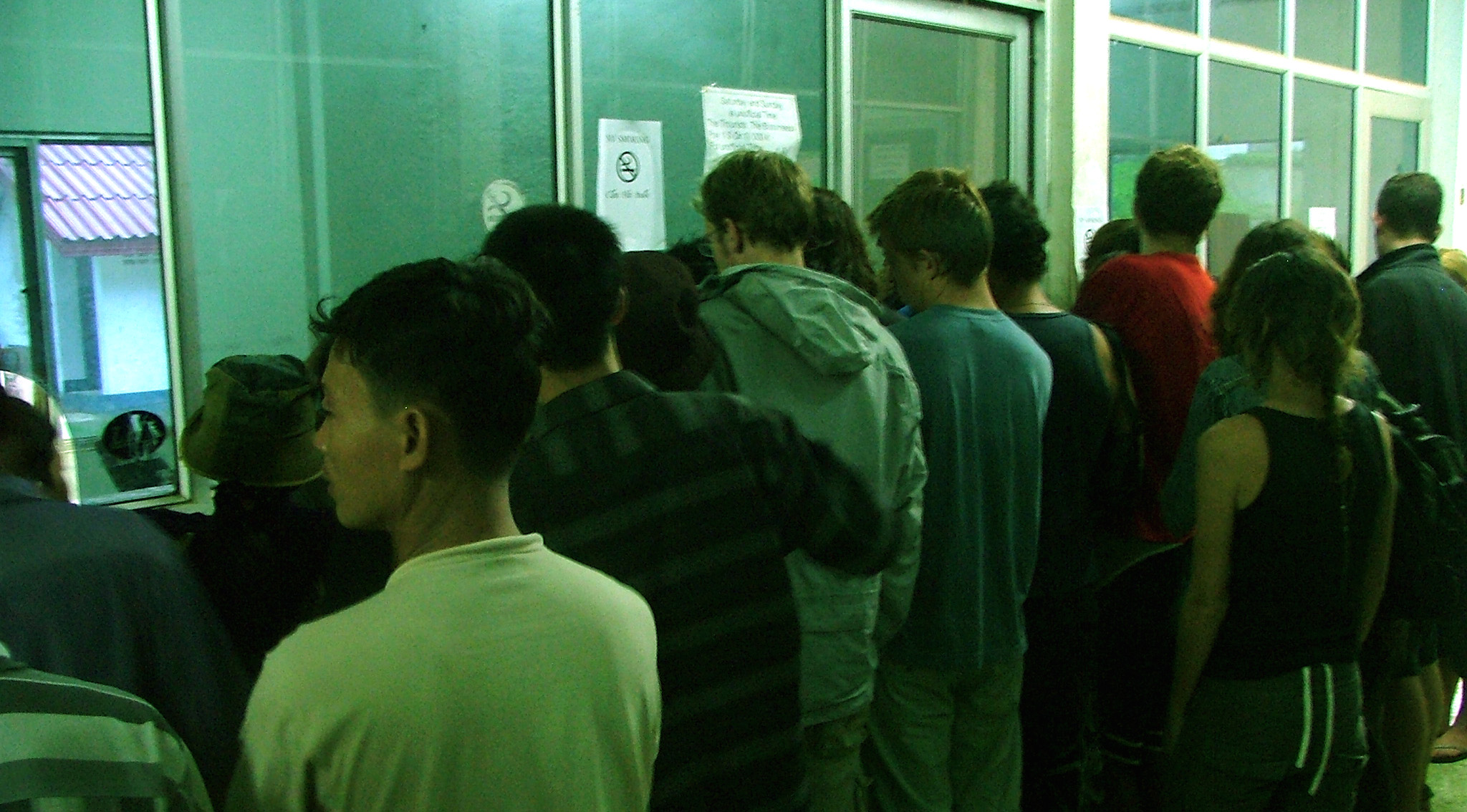
Border control. Photo by Daniel Fogg via Flickr.
Government officials foresee a future whereby passengers will not require any travel documents at all. Instead, digital biometric borders will play a key role in the politics of mobility management that relies on shifting the border outwards. To achieve this sweeping vision, the location, operation, and logic of the border have to be redefined to allow officials (increasingly operating transnationally and in collaboration with third parties and private-sector actors) to screen and intercept travellers earlier, more frequently, and at a greater distance from the prosperous nations they seek to reach. These trends have been amplified by the current pandemic.
The border within us
As well as stretching outwards, the border is also seeping inwards. Faced with an invisible virus, many countries are turning to what may once have been thought of as futuristic tracing devices, and deploying surveillance tools previously used for anti-terrorism and international espionage against their own populations. Measures that tap into the bodies of citizens to contain coronavirus infections include: erecting ‘geo-fences’ to draw virtual enclosures around quarantine zones; using electronic tracker wristbands that alert the authorities if people violate their quarantine; flying drones to ensure people remain at home; and activating AI-powered thermal cameras that detect changing body temperatures to identify who in a crowd has a fever (as in Beijing’s Qinghe railway station).
In a bid to contain Covid-19 infections, Belgium, the Czech Republic, Denmark, France, Germany, Italy, Ireland, Latvia, Poland, and the Netherlands have rolled out mobile contact tracing applications. These apps automate the labour-intensive contact tracing of positive infections using a phone’s GPS and/or Bluetooth technology to detect if a user was near an infected individual. The information collected is then stored directly on the mobile device or a centralised government server to ‘reverse engineer’ the movement and contacts of citizens who tested positive. The Polish Government’s Kwarantanna domowa app not only collects users’ geolocation, it goes one step further, using facial recognition to ensure compliance with quarantine restrictions. With only a few exceptions, all persons subject to mandatory quarantine in Poland are required to install the app on their phone or risk criminal liability.
Several European mobile applications have been linked to create a pan-European tracing network. Following a successful pilot project, EU member states launched a network in October 2020 to connect national apps through a server located in Luxembourg. The server will be a gateway for sharing ‘proximity’ data across participating EU countries. For instance, an Italian resident who recently travelled to Germany would receive a notification if they were in contact with an infected person in that country or vice versa.
Treating the body as the site of regulation is no longer solely a purview of national governments. International organisations increasingly rely on cutting-edge technology to reimagine the delivery of humanitarian assistance. The UN Refugee Agency (UNHCR), the World Food Programme (WFP), and the International Organization for Migration (IOM) are all developing digital identities for migrants. Biometric technologies that capture the unique identifiers of individuals form the backbone of these new management systems.
When deciding whether to agree to such data collection and biometric registration, refugees should ideally be able to make free and informed decisions. Alas, possessing a digital identity is becoming the key to unlocking access to aid. In Jordan’s Azraq camp, refugees pay for food through a blockchain platform called ‘Building Blocks’. Tapping into biometric data collected by UNHCR and shared with the WFP, 10,000 refugees use iris scans instead of cash or vouchers to buy groceries in the camp. A similar system allows refugees to withdraw a monthly cash allowance in the blink of an eye at Cairo Amman Bank’s iris scan-enabled ATM network. These developments raise important questions: if food and shelter are conditional on the collection of your fingerprints and iris scan, does one have meaningful power not to acquiesce? What does consent mean?
The humanitarian sector’s embrace of these emerging technologies not only transforms the delivery of aid and the ability to track populations on the move. It actively stretches state borders outwards. In an attempt to better control cross-border flows, 23 countries in Africa and South America use the IOM’s Migration Information and Data Analysis System (MIDAS) to ‘manage’ more than 100 border crossings. MIDAS captures travellers’ biometric data, checking the data in real-time across an entire border network. It also automatically verifies these data against national and INTERPOL alert lists.
A 2019 agreement between UNHCR and the US Department of Homeland Security provides another illustration of the fusion of the humanitarian aid sector and border enforcement activities. The agreement sets the parameters for a one-way exchange of refugees’ biometric data from UNHCR to US government data systems. While only currently concluded with the United States, this type of agreement sets a precedent for future interaction with other countries. In a sweeping shift outwards, border control functions that were once carried out upon territorial arrival are now initiated thousands of kilometres away by aid organisations in refugee camps. As a result, the cross-border mobility of those on the move is tracked at multiple checkpoints along the travel continuum: pre-arrival, at crossing stations, and post-entry. The once-fixed territorial border is not just shifting inwards and outwards but fracturing.
The temptation to collect as much biometric data as possible and the reliance on ever more sophisticated technology by governments and international organisations has destabilised another boundary: that between the public and private sector. In the past, governments had the monopoly to decide on the extent of, and methods for, the collection and management of information about the movement of people. These days are coming to an end. Before the pandemic, the impact of high-tech companies and other corporate actors in the field of bio-surveillance and identity management was already palpable. Today, it’s deepening and accelerating. If ‘knowledge is power’, whoever controls the data will have a tremendous edge.
The ethics of bio-surveillance
As these systems become more common and integrated across space and time, a new architecture of bio-surveillance is consolidating. The introduction of surveillance techniques that rely on our bodies as the ultimate sites of mobility regulation has been underway for decades, but Covid-19 is accelerating their adoption in our everyday life. The trend may well prove hard to reverse, even after the pandemic subsides, raising deep and profound challenges that remain difficult to see – much like the shifting border itself.
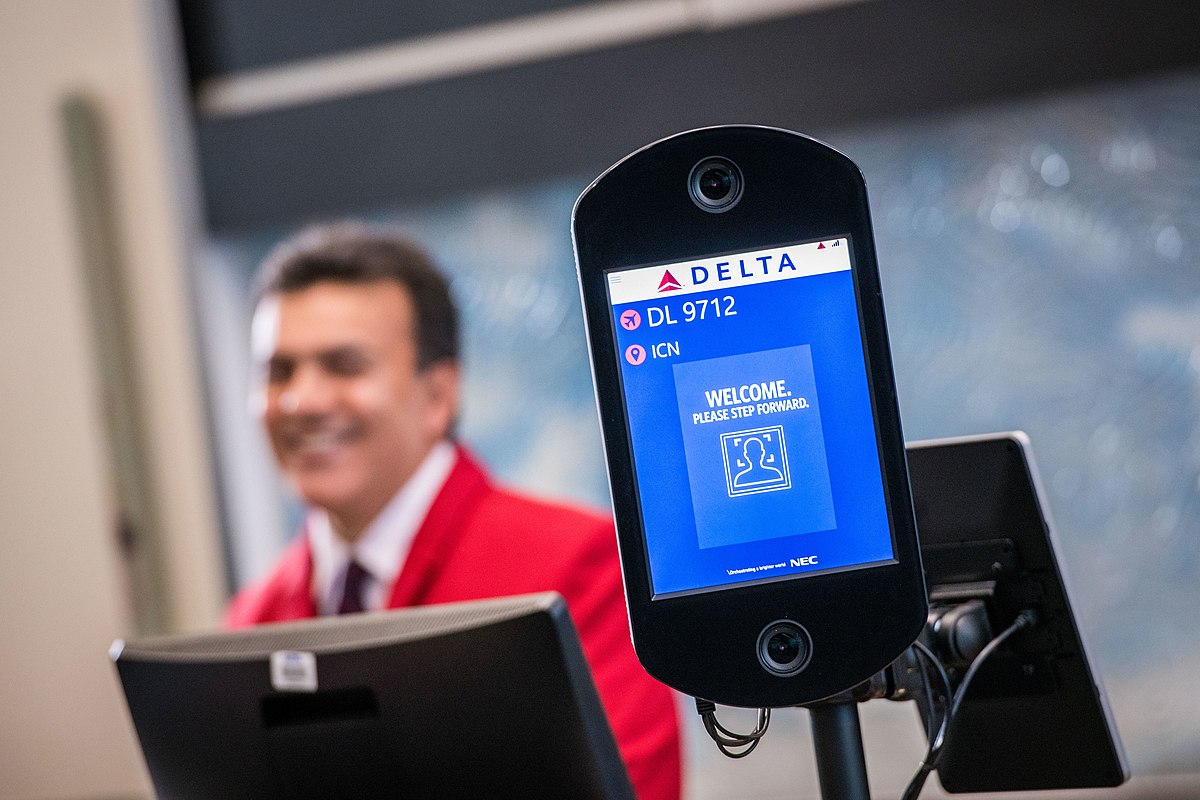
Biometric scanning technology at Hartsfield-Jackson International Airport in Atlanta, Ga. Photo by John Paul Van Wert/Rank Studios 2018 via Wikimedia Commons.
Questions of volitional versus coerced use of such technologies – and their architecture – will have to be debated. Even where consent is the norm, the voluntary use of technology risks being undermined by social and economic pressure. It is not too far-fetched to imagine a near future in which employers require their staff to download a contact tracing app, or to undergo a temperature scan or saliva-based test, as a precondition to entering an office building. In Germany, PwC markets a contact tracing app, Safe Space, for employers to monitor risks of infections within their workforce. Perhaps each of us will need to carry an ‘immunity passport’ or wear a wrist or ankle bracelet monitoring our vital health signs (oxygen level, pulse rate, body temperature) before we can go shopping or enter a restaurant? Such measures may prove helpful in containing the spread of the virus, but once put into operation, it may prove difficult to put the genie of bio-surveillance back in the bottle, as it provides governments aided by powerful actors unprecedented technological ‘see-all’ eyes to monitor and track everyone’s mobility everywhere. These developments raise significant ethical and legal dilemmas, and like the pandemic itself, risk exacerbating existing inequalities.
What is in store for global migration and mobility once the pandemic is tamed? In the initial wave of response, close to 200 countries curbed either inbound or outbound travel. Counter to the narrative of border walls, it did not require a single sack of cement for the United States to barricade itself from travellers arriving from China, and later, the European Union. Instead, it took only the stroke of a pen to define who may enter (primarily American citizens and permanent residents) and who will be turned away – everyone else, save diplomats and medical experts invited to help tackle the virus.
Yet another underlying theme emerged, reviving a troubling association between the ‘infectious’ and the foreigner. A narrative that constructs the virus as extraneous to the homeland surfaced in statements made by political leaders. Such rhetoric has served nationalist agendas, as in statements made by Italy’s far-right Lega party, blaming immigrants for a surge in cases. It may also serve as a pretext, as we have seen in Malta, for blocking asylum seekers picked up at sea from making landfall, or in Greece, for urging the establishment of ‘closed camps’, whereby refugee movement in and out of the gates will be regulated with microchipped armbands. Similar concerns about verifying identity and arresting mobility underpin the proposed EU Migration Pact’s provisions imposing health checks of irregular arrivals, who ‘might have been exposed to health threats (e.g. when coming from war zones, or as a result of being exposed to communicable diseases)’.
Closure and exclusion, however, is not the only political response triggered by Covid-19. Several countries have extended healthcare and social protection measures to non-citizen residents in a display of solidarity with migrants. Consider the decision taken by the Portuguese government to give all migrants already on its territory, including asylum seekers, access to the same rights as citizens to ‘health, social security, and job and housing stability as a duty of a solidarity society in times of crisis’. Here, sharing the same risks, in the same place, and at the same time created camaraderie and community. Canada, for its part, has recognised the contribution of migrants in the fight against Covid-19.
In August, the government announced that asylum seekers working in the healthcare sector during the pandemic will be offered a pathway to permanent residency in Canada. At this juncture, the narrative is altered; rather than being constructed as a health risk, or a ‘problem’ to fix, those who play a role in the collective fight against the deadly virus become part of the solution.
While such policies reveal the possibilities for inclusion, the arc of history shows that discourses of contagion too often provide governments with a purportedly value-neutral, rational justification for imposing restrictions on cross-border movement. The current pandemic is no different. However, today the capacity for surveillance is far greater than at any time in the past. As the examples provided illustrate, borders are not vanishing but rather being reimagined and reinvented. Far from the dream of a borderless world that emerged after the fall of the Berlin Wall, today we see not only more border walls but also the rapid proliferation of ‘portable’ legal barriers that may appear anywhere but are applied selectively and unevenly, with fluctuating intensity and frequency of regulation. These developments bear dramatic implications for the scope of rights and liberties that each of us may expect to enjoy, whether at home or abroad.
Long after the pandemic is over, we may continue to be affected by its residue. New ultra-sophisticated technologies of bio-surveillance will trace people in novel relations of power in political spaces of (im)mobility. In this evolving reality, shifting borders are increasingly wielded to determine who deserves passage through the otherwise bolted gates of admission. Decisions made today will have dramatic consequences for tomorrow. Whether, and if so, how, we push back against fast-evolving bio-surveillance measures that overlook considerations of equity, privacy, consent, and proportionality will define the future: not only of shifting borders but also our multiple communities of membership and belonging.
Home Office (2007). Securing the UK Border: Our Vision and Strategy for the Future. This article expands on ideas that first appeared in Open Democracy.
Published 8 July 2021
Original in English
First published by Green European Journal, 30 November 2020
© Marie-Eve Loiselle / Shachar Ayelet / Green European Journal / Eurozine
PDF/PRINTIn collaboration with
Newsletter
Subscribe to know what’s worth thinking about.
Related Articles
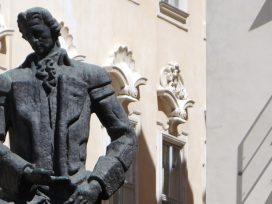
What happens to democracy when governments court the rich and highly skilled, offering citizenship as privilege, when those in need are turned away? This year’s Speech to Europe takes the concept of ‘good’ and ‘bad’ migrants to task.

From getaway destination to point of entry, the EU’s southernmost territories attract plenty of ongoing arrivals. Migrant containment policies, outlining stringent confinement and processing, would see newcomers restricted to the archipelago. But could Spain’s swift transfers and regularization turn the tide of migration strategy?
